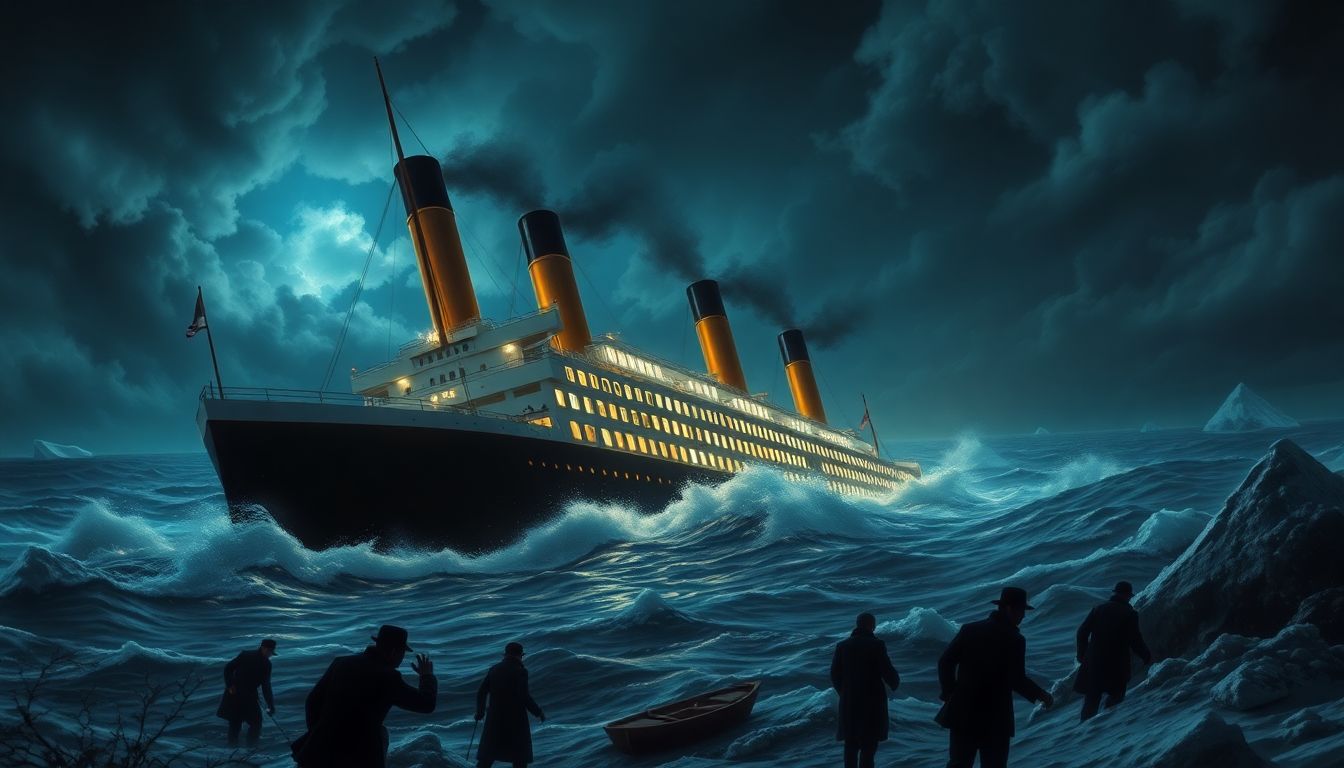
Why Did the Titanic Crash? The Causes Behind the Tragic Sinking
Introduction
The sinking of the Titanic is one of the most famous maritime disasters in history. Over a hundred years later, people still wonder what caused the great ship to sink on its first voyage. It was seen as a marvel of engineering and luxury, considered nearly unsinkable. When it went down, it shocked the world and changed ship safety forever. Understanding why the Titanic crashed can teach us important lessons about safety, technology, and human mistakes.
The Design and Construction of the Titanic
Engineering Marvels and Limitations
The Titanic was built to be the largest and most luxurious ship of its time. It featured powerful engines, vast passenger spaces, and even a swimming pool. Many believed it was almost indestructible, thanks to innovative safety features like watertight compartments. But these modern ideas had limits. Engineers thought these bulkheads could stop sinking, but they didn't know how weak some parts really were.
Material and Construction Flaws
Some problems came from the materials used to build the Titanic. Many rivets, which hold the steel plates together, might have been made from inferior steel. When the ship hit the iceberg, these rivets popped or broke, causing hull plates to come apart. Also, the steel itself may have been brittle in cold Atlantic waters, making cracks more likely. These small flaws added up to a bigger problem during the disaster.
The Role of Human Error and Decision-Making
The Captain’s Decisions and Crew Actions
Captain Edward Smith was a seasoned sailor, but he made some risky choices that morning. He kept the ship speeding through icy waters, despite iceberg warnings from other ships. Crew members also had trouble responding quickly during the crisis. Some didn't understand how to efficiently load and evacuate passengers or handle the damage control.
Misjudgments and Overconfidence
Many believed the Titanic was unsinkable, which created complacency. This sense of safety made the crew less cautious. They underestimated how dangerous icebergs truly were. Overconfidence led to taking dangerous risks, like traveling at high speed in icy zones, which made the collision more likely.
Environmental Factors and Iceberg Collision
The Voyage Through the North Atlantic
The Titanic was traveling through the icy waters of the North Atlantic on April 14, 1912. The route went close to known iceberg zones where large icebergs drifted with the current. Cold air and fog in the area made spotting icebergs harder. Many ships had warnings about these ice zones, but not all crew paid close attention.
The Iceberg Encounter
Suddenly, the massive ship struck an iceberg on its starboard side. The impact tore a series of huge holes along the hull, causing flooding in multiple compartments. The iceberg's size and the damage it caused were more extensive than anyone expected. The cracks let water pour in, making the ship sink faster than anyone could imagine.
Technological Failures and Safety Shortcomings
Insufficient Lifeboats and Evacuation Failures
One of the biggest problems was too few lifeboats. Safety rules back then didn't require enough for all passengers and crew. Only about half of those onboard could escape. When the ship started sinking, chaos broke out. Many lifeboats left half-empty, and some boats were launched improperly or too late, costing lives.
Lack of Wireless Communication and Warnings
The Titanic's radio system was supposed to send and receive warnings about icebergs and other ships. But many messages from nearby ships warning about ice were ignored or delayed. This failure meant the Titanic was not advised early enough about the danger, or the warnings were not taken seriously, increasing the risk.
Oversight and Regulatory Failures
Limitations of Maritime Safety Regulations
At the time, safety laws did not demand enough safety measures for ships like the Titanic. Rules were outdated, and regulations didn’t require enough lifeboats or safety drills. After the disaster, international rules improved, making ships safer.
Leadership and Organizational Responsibilities
The White Star Line, which owned the Titanic, prioritized speed and luxury over safety. They pushed the ship to its limits for profit and fame. Lack of strict oversight meant mistakes went unchecked. Better leadership and strict safety policies could have saved more lives.
Conclusion
The Titanic's crash happened because of a mix of design flaws, human mistakes, environmental dangers, tech failures, and weak safety laws. Each factor played a part in this tragic event. What we learn from the sinking is clear: constant innovation, careful decision-making, and strong safety rules are vital to prevent another disaster. The Titanic reminds us that even the greatest ships need careful planning and respect for nature’s power. By studying this tragedy, we can make sure future journeys are safer for everyone.
Takeaway: Knowing the causes behind the Titanic crash helps us appreciate the importance of safety, technology, and leadership in avoiding disasters at sea.


0 Comments